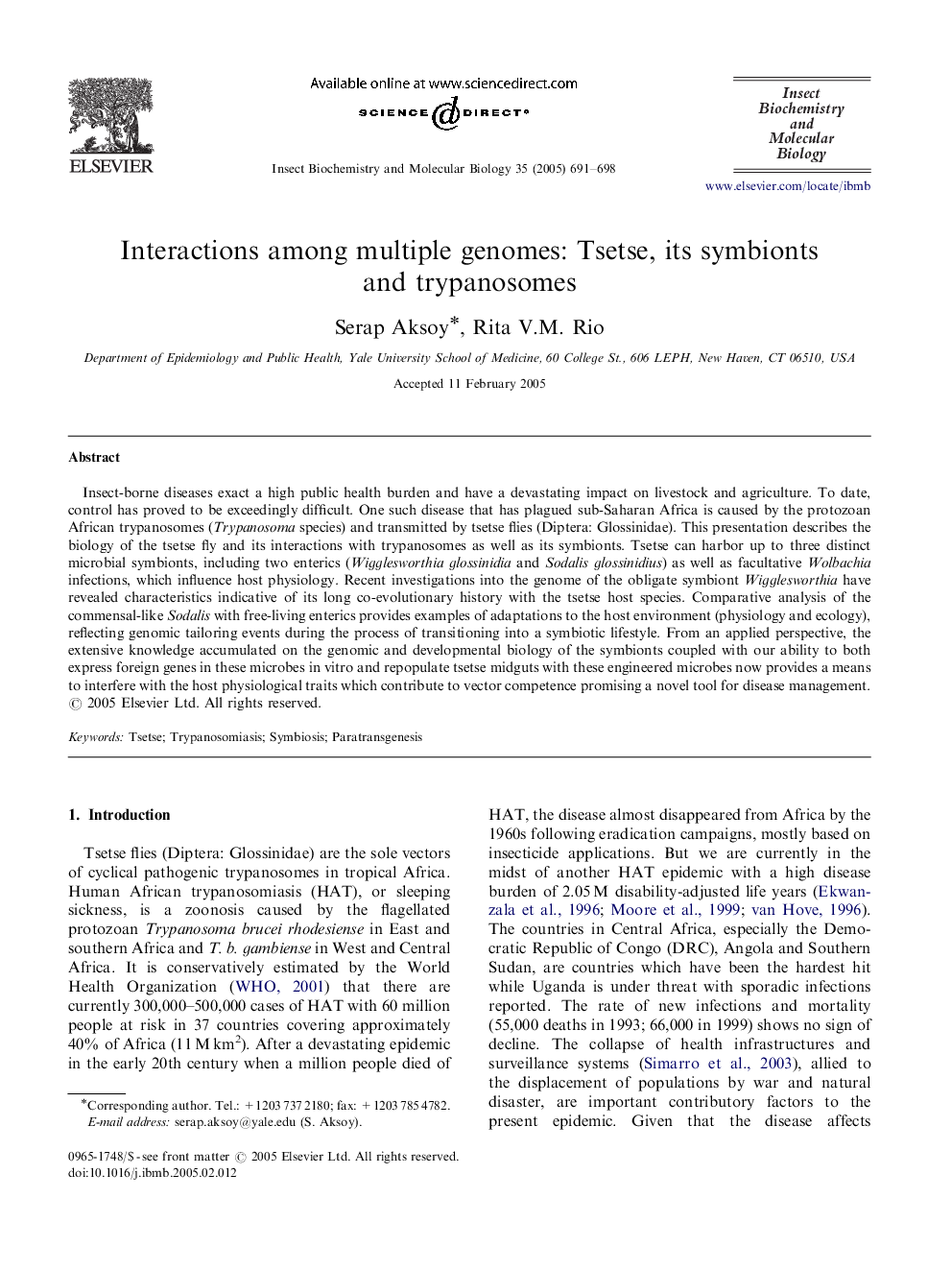| Article ID | Journal | Published Year | Pages | File Type |
|---|---|---|---|---|
| 10824238 | Insect Biochemistry and Molecular Biology | 2005 | 8 Pages |
Abstract
Insect-borne diseases exact a high public health burden and have a devastating impact on livestock and agriculture. To date, control has proved to be exceedingly difficult. One such disease that has plagued sub-Saharan Africa is caused by the protozoan African trypanosomes (Trypanosoma species) and transmitted by tsetse flies (Diptera: Glossinidae). This presentation describes the biology of the tsetse fly and its interactions with trypanosomes as well as its symbionts. Tsetse can harbor up to three distinct microbial symbionts, including two enterics (Wigglesworthia glossinidia and Sodalis glossinidius) as well as facultative Wolbachia infections, which influence host physiology. Recent investigations into the genome of the obligate symbiont Wigglesworthia have revealed characteristics indicative of its long co-evolutionary history with the tsetse host species. Comparative analysis of the commensal-like Sodalis with free-living enterics provides examples of adaptations to the host environment (physiology and ecology), reflecting genomic tailoring events during the process of transitioning into a symbiotic lifestyle. From an applied perspective, the extensive knowledge accumulated on the genomic and developmental biology of the symbionts coupled with our ability to both express foreign genes in these microbes in vitro and repopulate tsetse midguts with these engineered microbes now provides a means to interfere with the host physiological traits which contribute to vector competence promising a novel tool for disease management.
Related Topics
Life Sciences
Agricultural and Biological Sciences
Insect Science
Authors
Serap Aksoy, Rita V.M. Rio,
